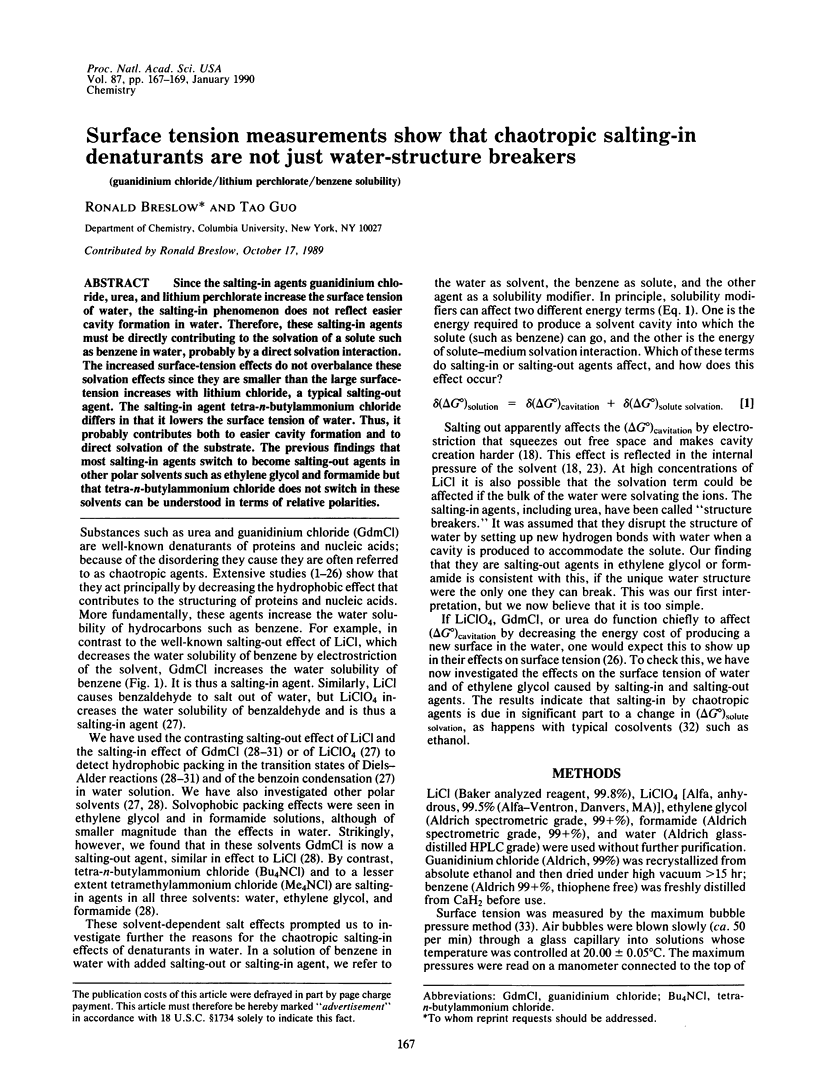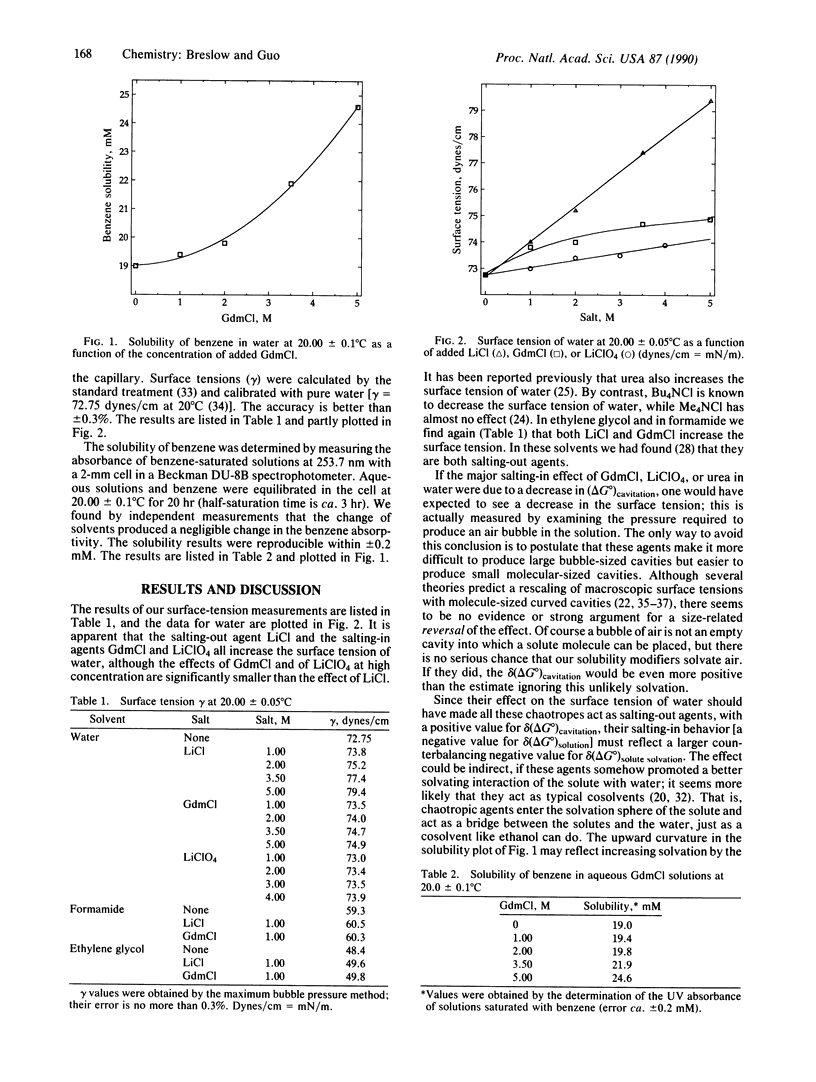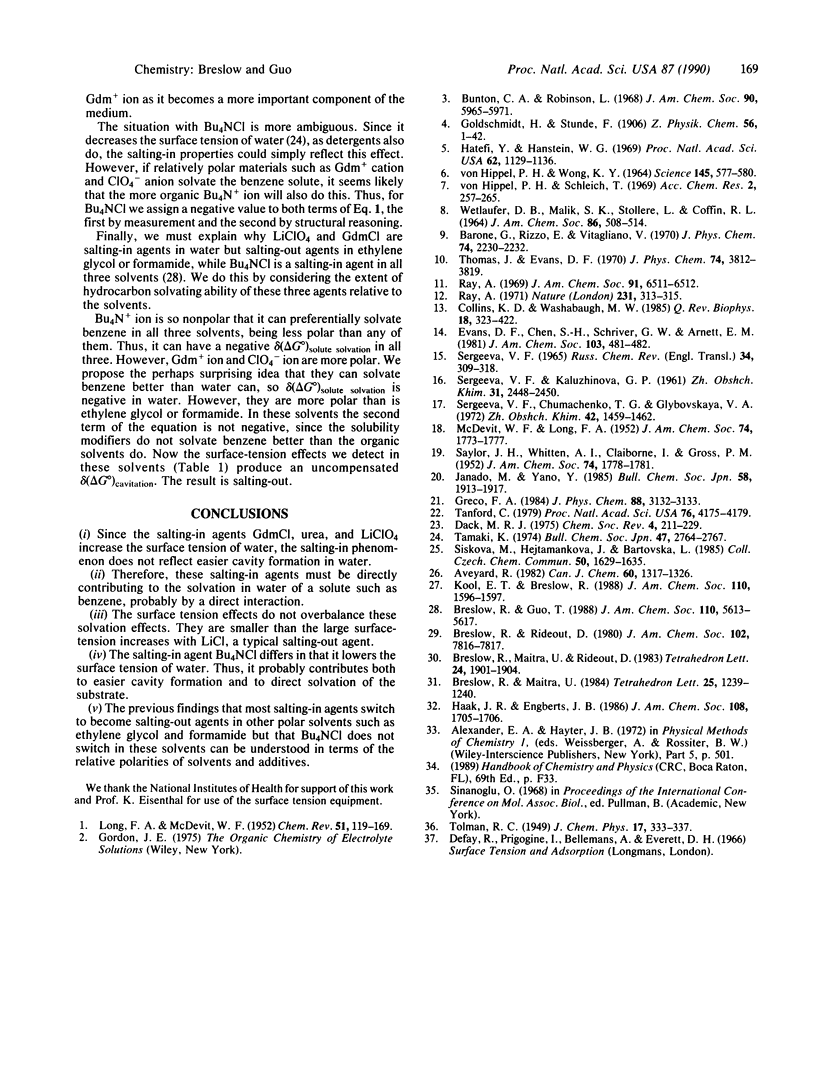Abstract
Since the salting-in agents guanidinium chloride, urea, and lithium perchlorate increase the surface tension of water, the salting-in phenomenon does not reflect easier cavity formation in water. Therefore, these salting-in agents must be directly contributing to the solvation of a solute such as benzene in water, probably by a direct solvation interaction. The increased surface-tension effects do not overbalance these solvation effects since they are smaller than the large surface-tension increases with lithium chloride, a typical salting-out agent. The salting-in agent tetra-n-butylammonium chloride differs in that it lowers the surface tension of water. Thus, it probably contributes both to easier cavity formation and to direct solvation of the substrate. The previous findings that most salting-in agents switch to become salting-out agents in other polar solvents such as ethylene glycol and formamide but that tetra-n-butylammonium chloride does not switch in these solvents can be understood in terms of relative polarities.
Full text
PDF


Selected References
These references are in PubMed. This may not be the complete list of references from this article.
- Collins K. D., Washabaugh M. W. The Hofmeister effect and the behaviour of water at interfaces. Q Rev Biophys. 1985 Nov;18(4):323–422. doi: 10.1017/s0033583500005369. [DOI] [PubMed] [Google Scholar]
- Hatefi Y., Hanstein W. G. Solubilization of particulate proteins and nonelectrolytes by chaotropic agents. Proc Natl Acad Sci U S A. 1969 Apr;62(4):1129–1136. doi: 10.1073/pnas.62.4.1129. [DOI] [PMC free article] [PubMed] [Google Scholar]
- Ray A. Solvophobic interactions and micelle formation in structure forming nonaqueous solvents. Nature. 1971 Jun 4;231(5301):313–315. doi: 10.1038/231313a0. [DOI] [PubMed] [Google Scholar]
- Tanford C. Interfacial free energy and the hydrophobic effect. Proc Natl Acad Sci U S A. 1979 Sep;76(9):4175–4176. doi: 10.1073/pnas.76.9.4175. [DOI] [PMC free article] [PubMed] [Google Scholar]
- VONHIPPEL P. H., WONG K. Y. NEUTRAL SALTS: THE GENERALITY OF THEIR EFFECTS ON THE STABILITY OF MACROMOLECULAR CONFORMATIONS. Science. 1964 Aug 7;145(3632):577–580. doi: 10.1126/science.145.3632.577. [DOI] [PubMed] [Google Scholar]


